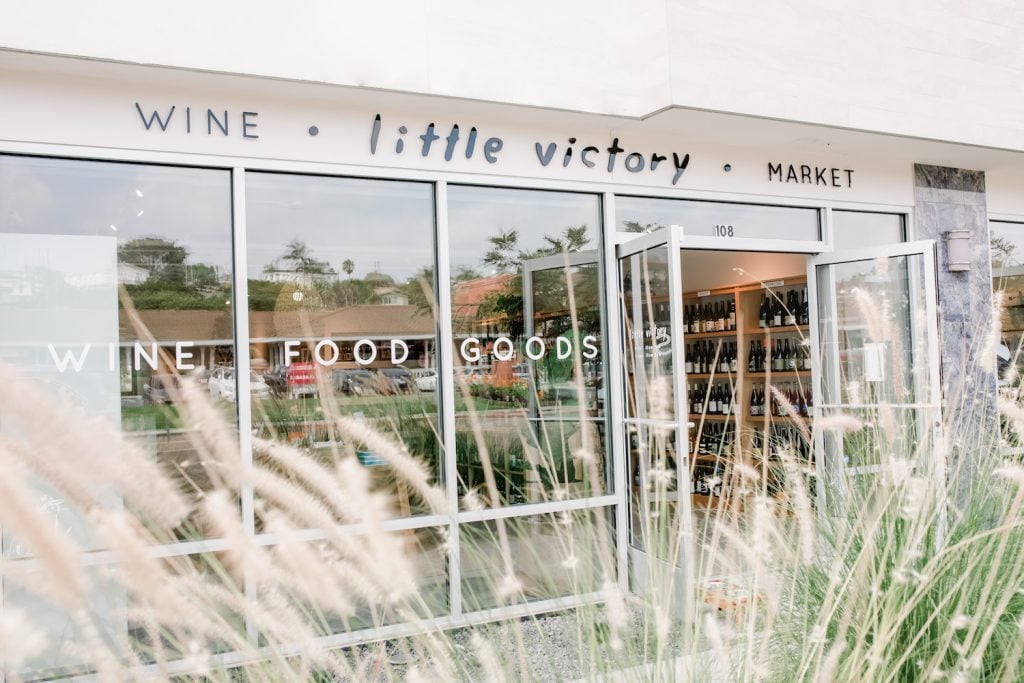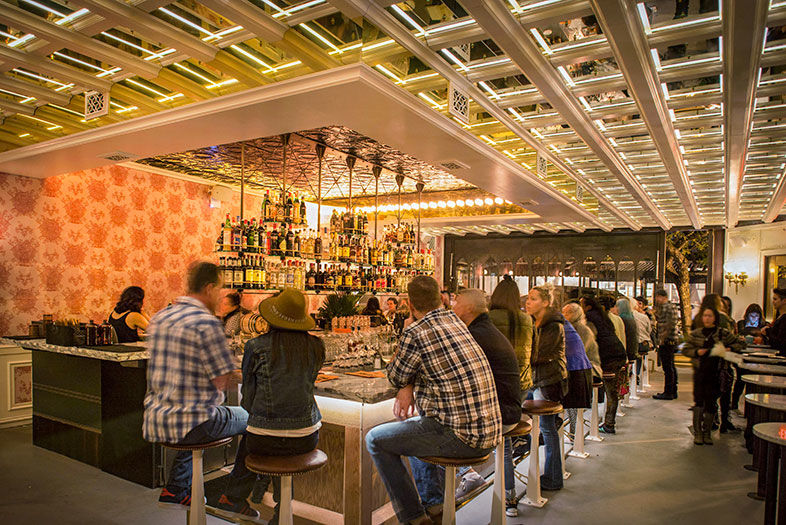Before there was commercial air travel, there was tiki. When Americans wanted to escape from whatever dulled or oppressed them, they went to tiki bars. Inside the door, they were transported to a South Pacific netherworld that was sexy, joyous, and a bit dangerous. Gentle Polynesian music warbled under thatched ceilings, muted orange lights suggested permanent dusk, tiki carvings loomed as the primitive alien godforce, and drinks were full of exotic fruit juices and Caribbean rums, served with big, drag-queenish garnishes in elaborate mugs.
Now, after decades of being co-opted, watered down, and marginalized, classic tiki culture is about to retake San Diego—one of its original stomping grounds.
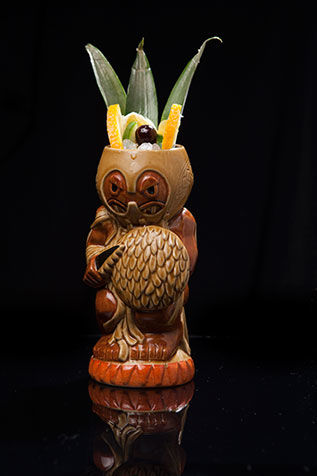
Tiki Takeover
Sycamore Den’s Ultimate Warrior
“I think people love it now for the same reason they were drawn to it originally,” says Martin Cate, owner of San Francisco’s famous Smuggler’s Cove tiki bar, and partner in the upcoming San Diego tiki bar False Idol. “It’s a chance to escape into this magical island world. It’s a vacation in a glass.”
Tiki culture was started in 1934 Los Angeles by Don the Beachcomber. The Great Depression was in full malaise, America needed escape, and Don gave it to them. Rum was inexpensive at the time, and Don knew the best ones from his travels through the South Pacific. He decorated his island bar with the tropical artifacts he’d accumulated.
“Patrons had never seen anything like it,” says Cate, whose book Smuggler’s Cove: Cocktails, Rum, and the Cult of Tiki will be published this June. “These drinks were elaborate fantasies. He took the structure of classic Caribbean planter’s punch and multiplied the ingredients and created these long, layered drinks that he called ‘rum rhapsodies.’ He used local citrus, blends of rums, and spices. They had exciting names like Vicious Virgin and The Zombie. They sounded dangerous, and they were.”
America quickly became hooked on this “Polynesian pop” culture. Then, after World War II, a series of events helped tiki sweep the nation. Soldiers returning from the Pacific theater remembered island-style bars as one non-terrifying thing about their experience. James Michener’s famous film South Pacific seduced the country. Hawaii became a U.S. state in 1959. Commercial air travel was born, and Americans flew off to Hawaiian vacations and fell in love with tropical culture even more.
“It starts to take over not just bars, but apartments and businesses and shoe stores and backyard luaus,” explains Cate. “It’s this massive cultural movement.” Especially, Cate says, in San Diego.
“You have this wonderful island of it called Shelter Island,” he says. “At one point the City of San Diego actually zoned the island and stated that every building needed to be built in the faux-Polynesian style. Just look at Humphreys and the Bali Hai. The birth of the scene is L.A., but San Diego has the same amazing climate and the palm trees and this fantastic maritime heritage and lore that tiki draws from.”
Eventually the dark times came. Vietnam cast an ugly shadow over this faux island culture. Baby boomers rejected tiki culture and big, indulgent drinks as a sign of how detached their parents were. Bad tiki bars began favoring cheaper rum and canned juice over fresh, quality juices.
It’s a chance to escape into this magical island world. It’s a vacation in a glass.
“Tiki became derided as tacky and something that needed to be destroyed in the name of progress,” says Cate.
Fast forward to the craft cocktail revolution of the late 2000s. Tired of the canned juice and sugary syrups (Midori, Blue Curacao) of the ’80s and ’90s, bars started making everything from scratch again. Bartenders scoured old books for turn-of-the-century and Prohibition-era recipes for tinctures, house-made syrups, you name it. The Negroni made a comeback, as did swizzles and punch bowls.
Whereas ’80s and ’90s bartenders did juggling acts and “flair” tricks, craft cocktail bartenders took a thoughtful, studious approach. Ironically, it brought with it an air of sobriety. Bartenders became overly pretentious aficionado-nerds, much like sommeliers had before them. It sucked the fun out of the room. And what could be more fun than tiki? It is the craft cocktail movement’s backlash against their formerly dour selves.
“We took ourselves too seriously,” says Anthony Schmidt, head bartender for Consortium Holdings (Fairweather, Craft & Commerce, Polite Provisions, etc.), and Cate’s partner in False Idol. “That’s the thing about exotic drinks. We can not take ourselves too seriously, while still taking the drinks seriously.”
The tiki revival is already well underway in places like San Francisco, Chicago, and New York. In San Diego, Fairweather is ostensibly our first craft cocktail tiki bar, and False Idol will be one of the most anticipated bar openings in the country. This year, the team behind Kettner Exchange will open The Grass Skirt at the former Good Time Charlie’s space in Pacific Beach, and Mission Beach will get Miss B’s Coconut Club. Grant Grill is planning a tiki event; and every Thursday, new vegan cocktail bar Kindred will become the tiki party known as “Permanent Vacation.”
The tiki explosion also means this year’s hottest spirit is set to be rum. Rum’s image was marginalized along with tiki culture, but many San Diego bartenders have discovered makers of incredibly complex, rich, well-made rum that should resuscitate its image. San Diego’s Malahat Spirits Co. makes four different varieties (standard, spiced, ginger, and black tea). Ballast Point’s Three Sheets Rum comes in standard, barrel-aged, and spiced. The best news? For now, a well-crafted rum sells for considerably less than a good bourbon or mezcal.
“You can really get long, aged rum at reasonable prices,” says Cate, owner of the world’s largest collection of rum at Smuggler’s Cove. “It’s a very inviting spirit. It doesn’t fight you. It wants to show you how beautiful and rounded it is, with caramel and vanilla and oak.”
At Kettner Exchange, bartender Steven Tuttle is making old-fashioneds with rum. And Cate says he’s looking forward to showing patrons at False Idol that good rum can stand on its own. “It’s made in over 50 countries in a tremendous range of styles,” he says. I look forward to putting four different rums in front of a customer and letting them discover it.”
Tiki-style Drinks to Try
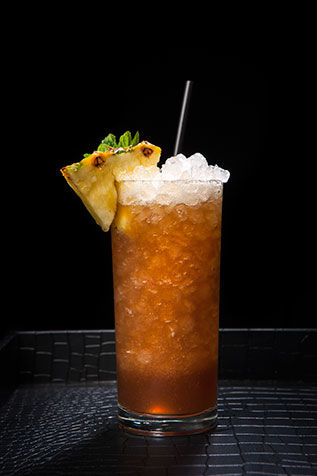
Tiki Takeover
THE BRAIN CANDLE / Kindred
SPACE-SHUTTLE
The Lion’s Share
Old Harbor Barrelflag rum, aged rum, lime, pineapple, passion fruit, absinthe, and Jamaican bitters. “This is a fun, lovable drink that anyone from an advanced bartender to a novice can enjoy,” says bar manager David Tye.
THE BRAIN CANDLE
Kindred
Black strap rum, Islay scotch, pineapple juice, lime juice, orgeat, angostura bitters, and absinthe. “It’s thick from the molasses, and it’s smoky,” says bartender David Kinsey. “It’s the anti-tiki tiki drink.”
PAINKILLER
Kettner Exchange
Blend of seven rums, pineapple juice, lime juice, passion fruit syrup (passion fruit, orange, and a dash of St. Germain), and house-made coconut syrup on crushed ice. “It flies off the menu,” says bartender Steven Tuttle.
OAXACAN DEAD
Fairweather
Cacao-infused rum, mezcal, lime juice, grapefruit juice, spices, and syrups. It’s their riff on the classic tiki cocktail, The Zombie.
DON’T EAT THE SNOW IN HAWAII
Sycamore Den
Five-rum blend, guava-cinnamon syrup, grapefruit, and pineapple juice served in a Magnum, P.I. tiki mug. “There is nothing better than a ripe pineapple,” says bartender Eric Giger.
THE SNEAKY TIKI
Bar Pink
It was famous at the Turf Club before creator Ami Reis opened Bar Pink. Every San Diego bartender mentions this drink, and its hazardous effects. It’s got coconut rum, sweet & sour, and fruit juices. “It’s delicious, and has crushed me many a time,” says David Tye of Lion’s Share.
DAIQUIRI
Prepkitchen
Mount Gay black label rum, charred and juiced pineapple, lime juice, and their fall syrup (cinnamon, star anise, and vanilla bean). “Even the most stern bartender has fun making a tiki cocktail,” says bartender Adam Lockridge.
More in Cocktails:
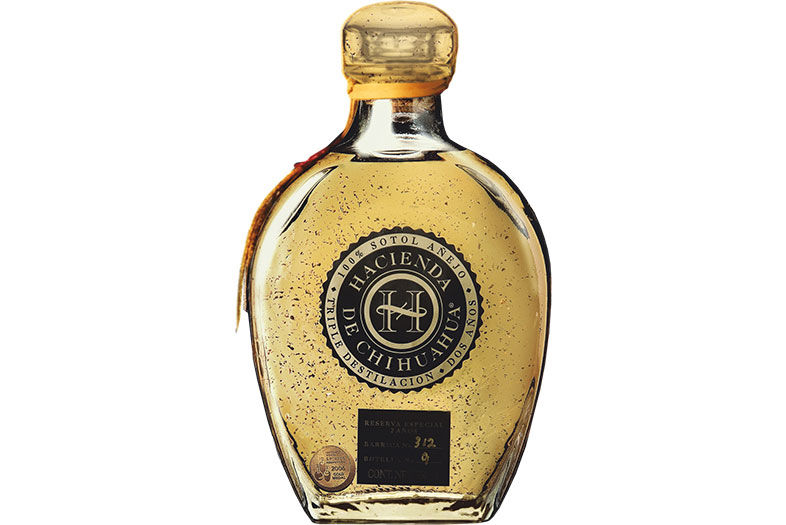
Tiki Takeover
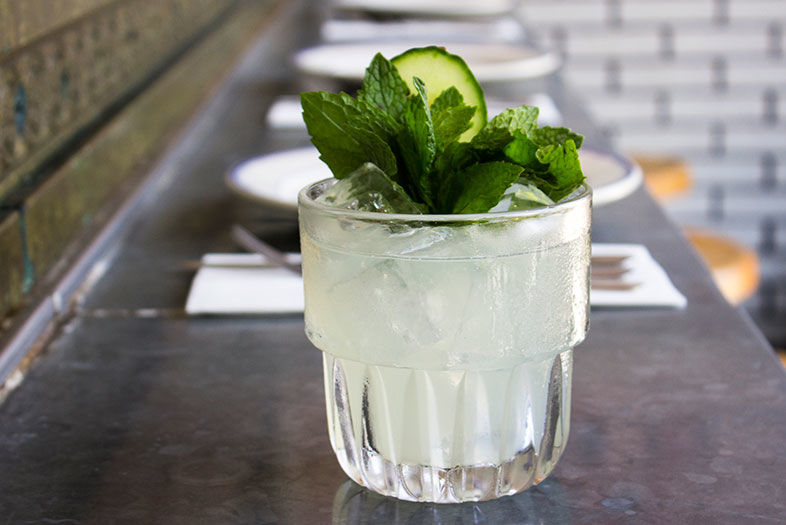
Tiki Takeover
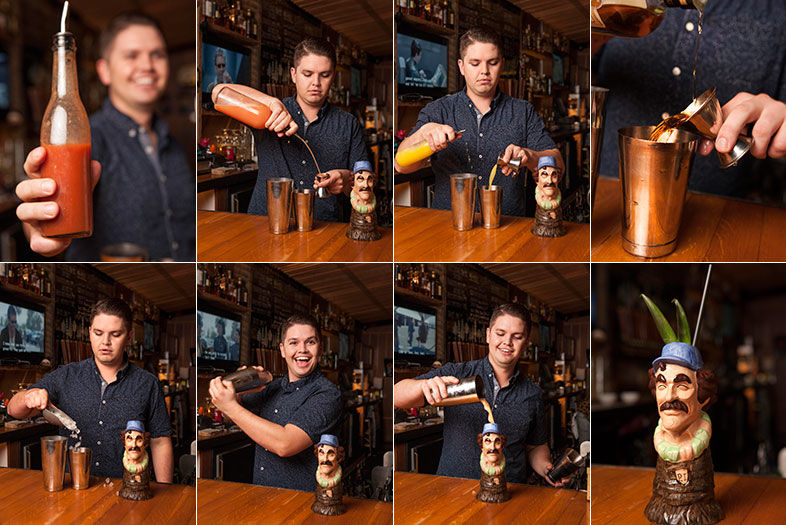
Tiki Takeover
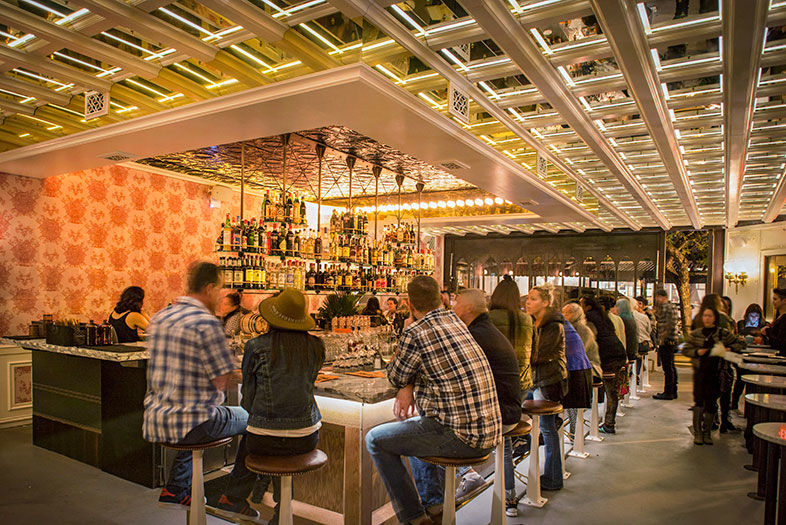
Tiki Takeover
Kindred


